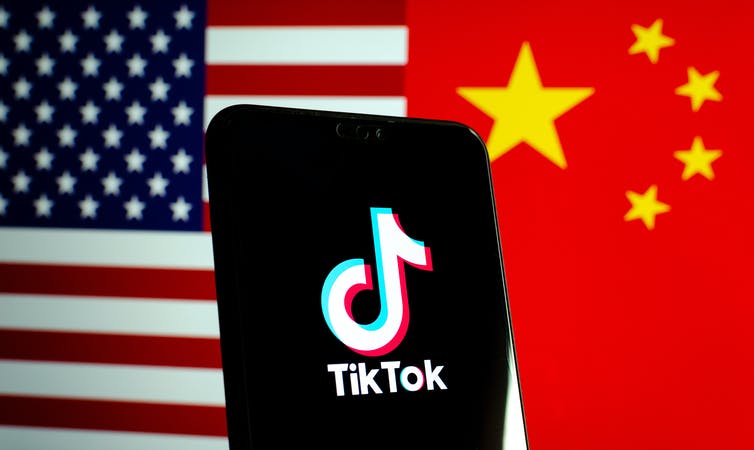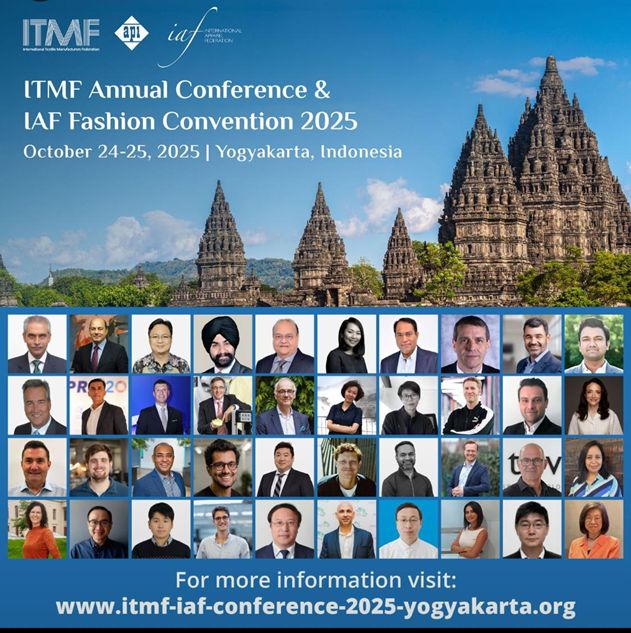As trade tensions between the US and China persist, a new battleground has emerged: social media platform TikTok. Chinese manufacturers are using viral videos to expose the supply chains of luxury goods, fashion, and apparel sold at significantly higher prices in the US. This strategy, dubbed 'Trade War TikTok' by some observers, appears to be a two-pronged approach aimed at disrupting traditional retail channels and simultaneously attracting American consumers to China through a new tourism initiative.
Exposing supply chains and price discrepancies
TikTok is currently flooded with videos purportedly revealing the origins of popular US brands. One viral video, viewed nearly 10 million times, features a woman in a factory showcasing yoga pants, claiming they are made in the same facility as Lululemon's but available for a mere $5-$6 compared to the US retail price of around $100.
Similarly, other videos display Louis Vuitton-style bags being offered for $50, with the presenter claiming they originate from the same manufacturers as the luxury brand. These videos often highlight the supposed minimal difference between branded products and their cheaper, unbranded counterparts, suggesting that the primary cost driver is the brand label itself.
Luxury brands push back, counterfeiting concerns rise
Luxury brands have been quick to refute these claims. Louis Vuitton, for instance, has consistently stated that none of its products are manufactured in China. Lululemon clarified that only around 3 per cent of its finished goods are made in mainland China, providing a list of authorized suppliers on its website.
Experts like Conrad Quilty-Harper, author of "Dark Luxury," suggest that many of these TikTok videos are likely promoting counterfeit or "dupe" goods rather than genuine products. "They're trying to conflate fake manufacturers in China with the real ones," Quilty-Harper explained. "They're very clever with their social media, and they're very effective at driving demand in the West."
Despite denials and expert scepticism, the allure of significantly lower prices has resonated with many TikTok users. Comments on these videos range from disbelief to excitement about potentially bypassing hefty retail markups.
China's dual strategy
This increase in 'Trade War TikTok' activity coincides with two significant moves by China.
D2C e-commerce exports: Chinese manufacturers are leveraging platforms like TikTok, DHgate, and Taobao to sell directly to American consumers, cutting out US retailers. This strategy aims to circumvent the increased tariffs imposed by the US, which currently stand at 145 per cent on many Chinese goods. By offering prices significantly lower than US retail, even after accounting for potential import duties and shipping, Chinese sellers hope to gain a competitive edge. Apps like DHgate, known for selling Chinese "dupes" of luxury goods, have got a popularity boost in the US.
Attracting buyers to China: China has recently announced a significant boost to its tourism sector, seemingly aimed at enticing international shoppers, including Americans. Key elements of this strategy include extended visa-free stay. The duration of visa-free stays for tourists from several countries, including potentially the US in future expansions, has been increased. Moreover, as of April 8, 2025, a nationwide rollout of a revamped Value Added Tax (VAT) refund mechanism allows foreign tourists to receive refunds instantly at the point of sale at designated tax-free retailers, rather than waiting until departure. The minimum eligible purchase is yen 500 per shop per day. As Li Xuhong, Vice President and Professor at the Beijing National Accounting Institute points out, the nationwide implementation of the instant VAT refund would "elevate China's tourism service standards and foster a 'friendly, efficient and convenient' tourism environment."
The combined impact of 'Trade War TikTok' and China's tourism initiatives could be significant. It could lead to disruption of US retail as the D2C approach threatens traditional US retailers by offering consumers the possibility of purchasing similar goods at drastically lower prices. This could lead to lower sales and pressure on US companies to reduce prices or justify their higher costs. The TikTok videos are forcing greater scrutiny of the often-opaque supply chains of luxury brands. Consumers are questioning the significant price differences and the actual value added by branding and marketing.
It could lead to the growth of counterfeit market. While some offerings might be from the same factories producing for major brands, there is a significant risk of a rise in the counterfeit market, potentially harming both consumers and brand reputation.
The simplified VAT refund process and extended visa-free stays could incentivize more foreign tourists to visit China and spend on retail goods, boosting the Chinese economy.
Also, this strategy can be seen as a direct response to US trade policies, attempting to undermine tariffs and shift economic power. The use of a popular social media platform like TikTok adds a new dimension to international trade disputes.
Is it a strategic move by China?
Analysis of Chinese official statements and social media sentiment suggests while the timing coincides with ongoing trade friction, Chinese sources see this as a strategic initiative to boost its global economic influence and shift away from a purely export-oriented model.
Official statements from the Ministry of Commerce emphasize the development of cross-border e-commerce as a "new engine for foreign trade," highlighting its role in directly connecting domestic producers with international consumers and fostering new growth points. Articles in state-backed media like the Global Times portray the tourism initiatives as a move to showcase China's economic dynamism and cultural appeal, attracting high-spending foreign visitors and boosting domestic consumption.
On Chinese social media platforms like Weibo and Douyin, there is a narrative of Chinese manufacturing prowess and the perceived "unfair" pricing of Western brands. Many users express pride in the quality of Chinese-made goods and see the direct-to-consumer model as a way to reclaim value and challenge the dominance of established international brands. Some view the TikTok strategy as a clever way to leverage social media to bypass traditional trade barriers and directly influence consumer behavior in key markets like the US.
However, there are voices within China that express caution regarding the potential for reputational damage due to the association with counterfeit goods and the need for stricter quality control and intellectual property protection to ensure the long-term sustainability of this approach.
Meanwhile, experts warn the majority of goods being promoted through these D2C channels are likely counterfeit. While some factories might produce components or even pre-assemble items for luxury brands, the final, branded products undergo stringent quality checks and are distributed through authorized channels. Purchasing from unofficial sources carries the risk of receiving inferior quality goods or supporting illegal counterfeiting operations.













